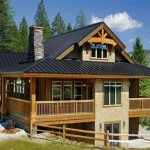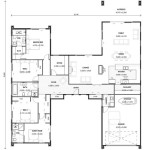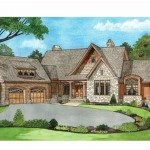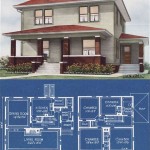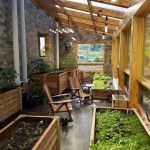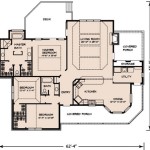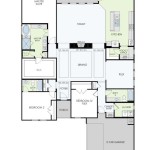Floor Plans For Tiny Houses: Maximizing Minimal Space
Tiny house living has gained immense popularity in recent years. This is driven by factors such as a desire for financial freedom, reduced environmental impact, and a simplified lifestyle. A crucial aspect of designing a tiny house is the floor plan. Effective floor planning is not just about fitting necessities into a small footprint, but about creating a functional, comfortable, and aesthetically pleasing living space.
The limitations inherent in tiny house dimensions necessitate careful consideration of every square inch. Unlike conventional houses where spaces can be more generously allocated, tiny houses demand multi-functional design and efficient utilization of vertical space. The floor plan becomes the blueprint for a successful and enjoyable tiny house experience.
Understanding Spatial Constraints and Prioritization
Designing a tiny house floor plan begins with a realistic assessment of spatial constraints. The first step involves determining the maximum allowable dimensions, often dictated by local building codes, trailer sizes (if built on wheels), or site restrictions. Once these parameters are established, the planning process can proceed. The decision to build on a foundation or trailer significantly impacts the design process. Trailer-based tiny houses will be subject to highway regulations and may have to include wheel wells in the floor plan.
Prioritization is key. Given the limited space, it is imperative to determine the essential living functions that must be accommodated. These typically include sleeping, cooking, sanitation, and living/working. The relative importance of each function needs to be evaluated; for example, a dedicated home office might be more critical for a remote worker than a large cooking area. Some features have to be determined by the kind of lifestyle one leads. If someone enjoys hosting larger groups of guests, a bigger seating area will be preferred. If someone enjoys a more outdoor lifestyle, they may opt for a smaller indoor living room to prioritize deck or outside area.
Furthermore, the number of occupants significantly influences the floor plan. A tiny house designed for a single individual will differ significantly from one intended for a couple or small family. The need for privacy, storage, and dedicated personal spaces must be factored into the design. Occupants might consider bunk beds to create extra space for an office or seating area.
Key Functional Zones and Design Strategies
Once the priorities are clear, the next step involves allocating space for the key functional zones within the tiny house. Each zone must be thoughtfully designed to maximize usability and minimize wasted space. An open-concept layout is often preferred in tiny houses as it allows for a greater sense of spaciousness and facilitates natural light flow. However, careful zoning is still important to define distinct areas within the shared space.
Sleeping Area:
Lofted sleeping areas are a common feature in tiny houses, leveraging vertical space to free up floor space for other functions. Access to the loft can be via a ladder, stairs, or a combination of both. Stairs, while taking up more floor space, offer greater comfort and safety, especially for older individuals or those with mobility limitations. Storage can be integrated into the stairs themselves. An alternative to the loft is a ground-floor bedroom, which offers easier access but reduces the available living space. Bed frames can be built to allow for maximum storage underneath.Kitchen Area:
Tiny house kitchens prioritize functionality over size. Compact appliances, such as apartment-sized refrigerators, induction cooktops, and convection ovens, are frequently used. Smart storage solutions, such as pull-out drawers, vertical shelving, and wall-mounted organizers, are essential for maximizing cabinet space. Fold-down countertops can be added to prep space and retracted when not in use. The kitchen may also be adjacent to a window to provide ventilation and natural lighting.Bathroom Area:
The bathroom typically houses a toilet, shower, and sink. Composting toilets are a popular choice in tiny houses as they conserve water and eliminate the need for a septic system connection. Space-saving shower designs, such as wet bathrooms (where the entire bathroom is waterproofed), are often employed. Wall-mounted sinks and vanities help to free up floor space. If a full-sized bathtub is desired, it must be carefully integrated into the overall floor plan.Living/Working Area:
This zone can serve multiple purposes, such as a living room, dining area, or home office. Multi-functional furniture, such as sofa beds, folding tables, and nesting chairs, are commonly used to adapt the space to different needs. Wall-mounted desks or fold-away tables can provide workspaces that can be easily stowed when not in use. Windows should be positioned to maximize natural light and views, enhancing the sense of spaciousness.Beyond these key zones, other design strategies can further optimize the space. These include incorporating built-in storage throughout the house, using light colors to create an illusion of spaciousness, and maximizing natural light penetration through strategically placed windows and skylights.
Essential Considerations for Functionality and Comfort
While maximizing space is a primary concern in tiny house design, functionality and comfort should not be compromised. The floor plan must not only accommodate essential living functions but also create a comfortable and livable environment.
Circulation:
The flow of movement within the tiny house is an important consideration. The floor plan should allow for easy and unobstructed movement between different functional zones. Narrow hallways and tight corners should be avoided. An open plan layout with clear pathways helps create a better traffic flow.Storage:
Adequate storage is critical in any living space, but especially so in tiny houses. The floor plan should incorporate a variety of storage solutions, including built-in cabinets, shelving units, and under-bed storage. Vertical space should be fully utilized to maximize storage capacity. Closet organizers and stackable bins can help to keep belongings organized and accessible.Natural Light and Ventilation:
Natural light and ventilation can greatly enhance the comfort and livability of a tiny house. The floor plan should include ample windows and skylights to allow natural light to penetrate the interior. Windows should be positioned to maximize sunlight exposure during the day and to provide views of the surrounding environment. Proper ventilation is also essential for maintaining air quality and preventing moisture buildup. Cross-ventilation can be achieved by strategically placing windows on opposite sides of the house.Accessibility:
The floor plan should be designed with accessibility in mind, particularly for individuals with mobility limitations. Ground-floor bedrooms and bathrooms, wider doorways, and ramps or lifts can improve accessibility. Even if accessibility is not a current concern, incorporating universal design principles can make the tiny house more adaptable to future needs.Climate and Location:
The local climate and geographic location significantly impact the floor plan. In colder climates, insulation and heating systems are crucial considerations. The orientation of the tiny house should be optimized to maximize solar gain in the winter. In warmer climates, natural ventilation and shading devices are important for keeping the interior cool. The floor plan should also take into account prevailing winds and potential hazards such as flooding or wildfires.Designing a functional and comfortable tiny house floor plan requires careful planning, prioritization, and attention to detail. By understanding spatial constraints, allocating space effectively, and considering essential factors such as circulation, storage, and natural light, it is possible to create a tiny house that is both efficient and enjoyable to live in.
Ultimately, the success of a tiny house floor plan lies in its ability to meet the unique needs and preferences of its occupants. A well-designed floor plan can transform a small space into a comfortable, functional, and personalized home.

Tiny House Floor Plans With Lower Level Beds Tinyhousedesign Design

Tiny House Floor Plans Design Your

Tiny House Plan Examples

12x24 Tiny House Plans Floor Layout Shed

Tiny House Floor Plans 32 Home On Wheels Design

Tiny House Floor Plans Absolute Houses

10 X 20 Tiny Home Designs Floorplans Costs And Inspiration The Life

2 Bedroom Tiny House Plans Blog Eplans Com

The Athrú Tiny House Humble Homes

Tiny House Design Floor Plans

